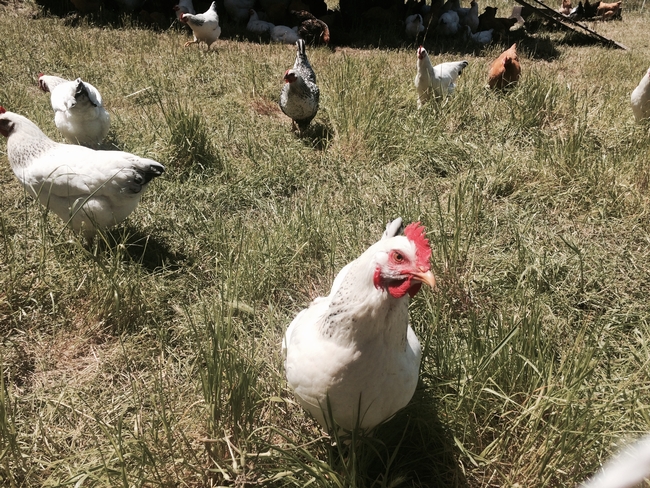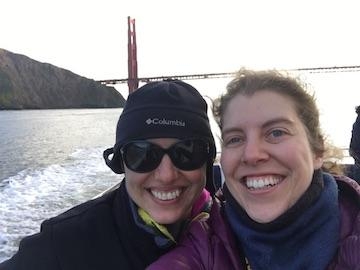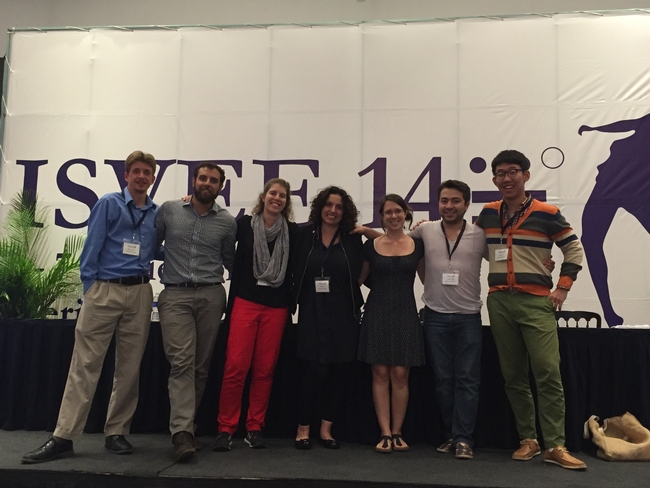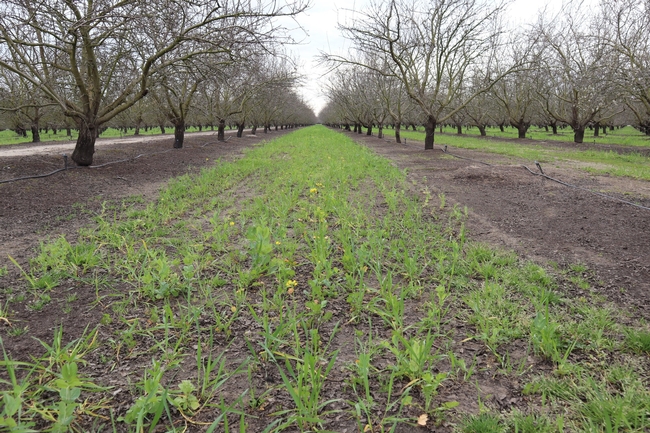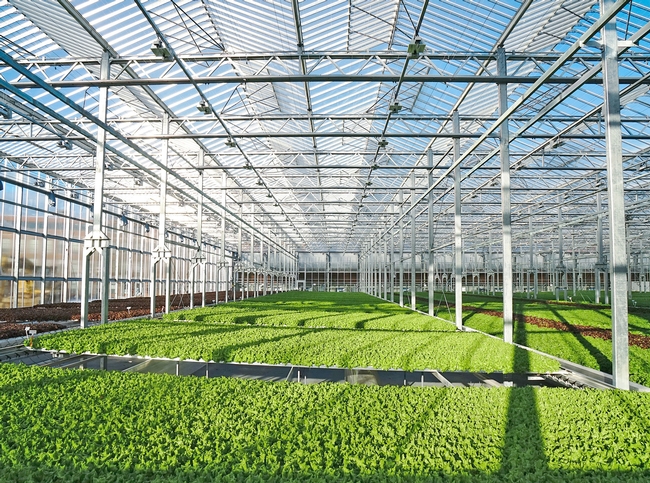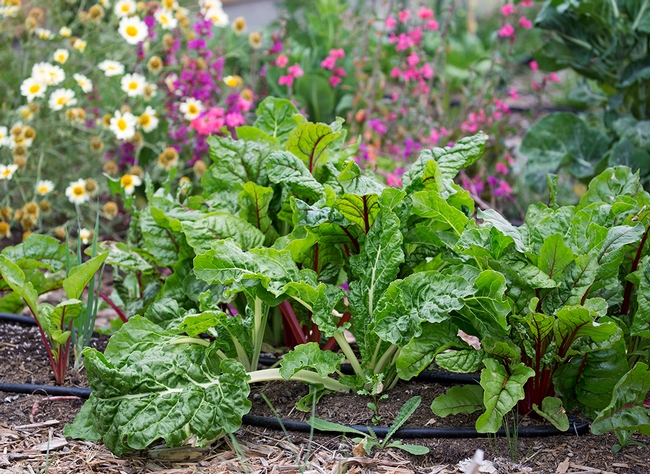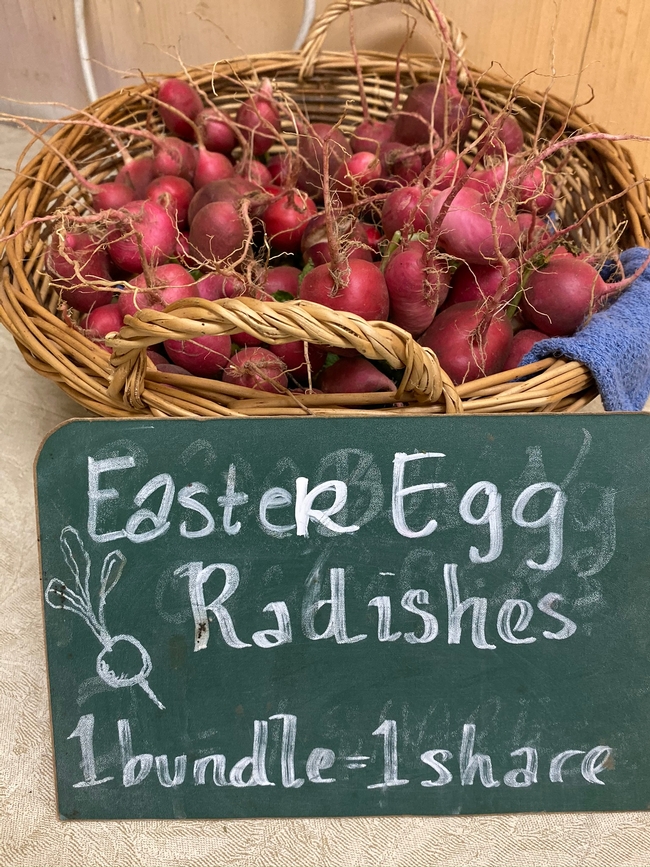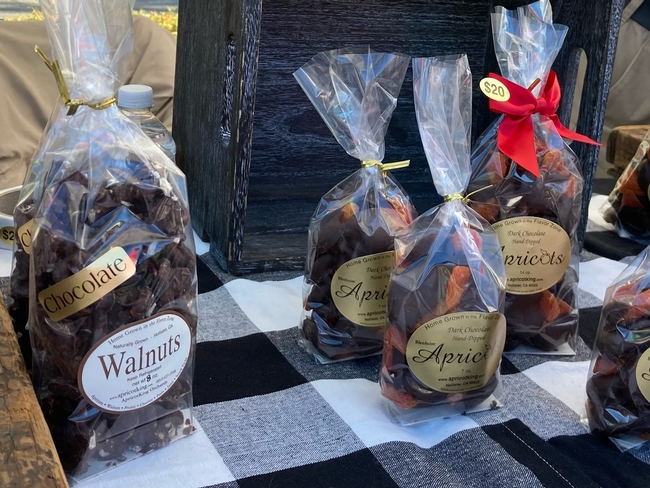Posts Tagged: urban
Backyard chickens stay healthy with help from UC researchers, website
In recent years, there has been a rise in the number of backyard poultry farms as people have taken an increased interest in farming. With raising these animals comes new challenges in taking care of them and ensuring they stay healthy.
However, there is a gap between the needs of these small avian communities in Californians' backyards and the current services available that generally work for service large-scale poultry operations alone.
This is where Beatriz Martinez Lopez, professor of infectious disease epidemiology, and Alda Pires, associate professor for Cooperative Extension and agronomist, come into play. Both in UC Davis School of Veterinary Medicine, the two women work on projects addressing avian influenza, animal health and food safety needs of people raising backyard poultry and livestock.
“Alda has a lot of experience and her work is amazing,” said Martinez Lopez.
To better address the diseases and problems associated with raising birds in the California context, they completed a series of needs assessments to understand the animal health requirements of small farms and backyard chickens.
“It has helped us be more organized and structured in our outreach,” Pires said. “There is a need to apply simple, practical biosecurity plans that are adapted for multiple species to small-scale, backyard and diversified farms.”
Through a multistate project funded by the USDA National Animal Disease Preparedness and Response Program, they created a website, FARM PPE, for producers to easily access biosecurity plan templates and additional resources. PPE stands for prepare, prevent and evaluate to reduce disease risk.
“Our clients are benefiting from the structured network we created,” Pires continued. “This website project, FARM PPE, aims to improve uptake of biosecurity measures on small-scale farms, by focusing on farmers and other professionals, including extension educators and veterinarians.”
The website project also created several trainings for farmers and educators to generate consistent messaging for small-scale farms.
With backyard birds being one of the potential sources of the highly pathogenic avian influenza virus, it is important to understand how the disease could spread to commercial flocks. The major challenge of the project is the complexity of the human/wildlife interface and the difficulties in predicting where an outbreak may arise.
Together, Martinez Lopez and Pires have published several papers about modeling disease transmission, and the work yields valuable information about hotspots for targeting surveillance strategies and wildlife surveys.
Their professional partnership is rooted in their personal connection; the scientists met as graduate students in 2006 and were delighted to cross paths again at UC Davis.
“Our collaboration started with friendship and our common interests in epidemiology and animal health,” said Pires.
As exemplified by their own careers, Martinez Lopez and Pires stress the importance of networking, getting involved and taking risks.
“Invite farm advisors and outreach partners from the beginning of the process so that they are part of the team,” Pires said. “That way you can create solutions that will give them the knowledge and resources they need.”
New UC ANR publication educates public on cycles of cattle production, grazing and economics
The pandemic has brought more people into nearby parks and public lands for hiking, biking and other recreational activities. In areas like the East Bay Regional Parks – a San Francisco Bay Area park system totaling more than 120,000 acres where about 65% of the land is grazed by livestock – visitors might see goats, sheep and, most likely, cattle.
Those encounters with animals (or their manure) represent a prime opportunity for members of the public to learn about agriculture and the ecological benefits of rangelands, according to Larry Forero, a UC Cooperative Extension livestock and natural resources advisor.
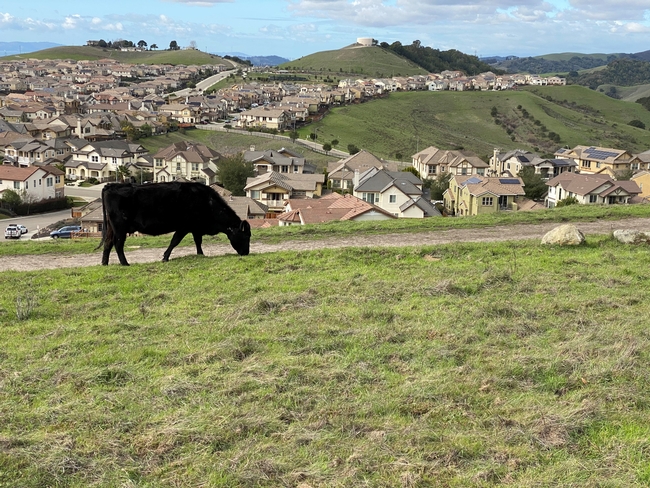
As livestock grazing (mostly by beef cattle) constitutes a significant portion of land use across the state, Forero – along with fellow UCCE advisors Sheila Barry and Stephanie Larson – recently authored a UC Agriculture and Natural Resources publication summarizing the mechanics of cattle production.
“Beef Cattle on California Annual Grasslands: Production Cycle and Economics,” published in October and available as a free download on the UC ANR Catalog, describes the seasonal phases of cattle production and the factors that impact ranchers' financial calculations and management decisions.
“This concise publication walks through annual stock flows and calendar of operations and gives tables for estimating costs, return over cash, and gross income under various scenarios,” said Forero.

“Even if only a relatively small percentage of park goers are interested, you still touch a lot of people with a document like this,” Forero explained.
He said he hopes park signage and QR codes will direct visitors to the publication for more information about the cattle and their seasonal movements.
“People often wonder where the cattle go when they leave the park and when they will return,” co-author Sheila Barry said. “The cattle may go to grass or feed yards in other places in California or even out of state.”
But, as this new UC ANR publication explains, the cattle production cycle turns over anew.
“There will be more cattle next fall, I promise,” Barry said.
Cover cropping season has begun: Free recorded webinars, demos available
Cover crops, typically planted in early fall, deliver a host of agricultural and conservation benefits. But many growers have gone away from planting them due to technical challenges and extra costs associated with the practice. In partnership with the Contra Costa County Resource Conservation District, two University of California Cooperative Extension advisors collaborated to support farmers' cover cropping efforts and reduce costs.
Kamyar Aram, UCCE specialty crops advisor for Contra Costa and Alameda counties, and Rob Bennaton, UCCE Bay Area urban agriculture and food systems advisor, developed online project content for a free educational series on cover cropping, which entails growing non-cash crops to add beneficial biomass to soils.
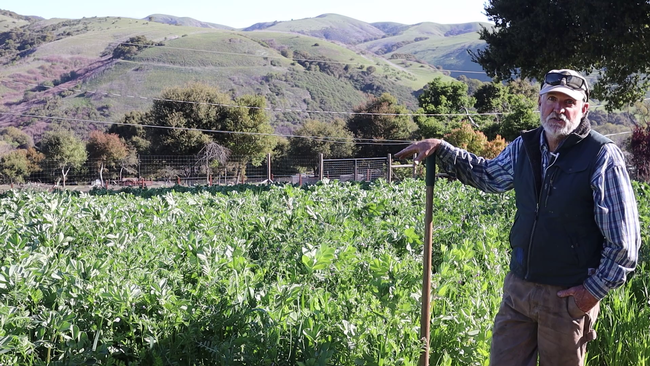
“Our site visit videos include a diversity of cropping systems, operation types and scales, and levels of experience with cover crops, so we really capture a variety of perspectives,” Aram said. “Now, with the videos online, I hope that they will serve as tools for other farm educators, as well as a resource for growers directly.”
When the COVID-19 pandemic scrapped plans for in-person workshops and visits, the series organizers pivoted to online webinars, starting in fall 2020, which drew more than 150 participants. The recorded videos – which cover basic methods, financial assistance, tips for orchards and vineyards and more – expanded the potential reach and impact of the series far beyond Contra Costa County.
“Each video, whether it's a webinar recording or a virtual site visit, emphasizes different aspects, and the titles are designed to help viewers find the resources they are most likely to benefit from,” said Aram. “There really is something for everyone.”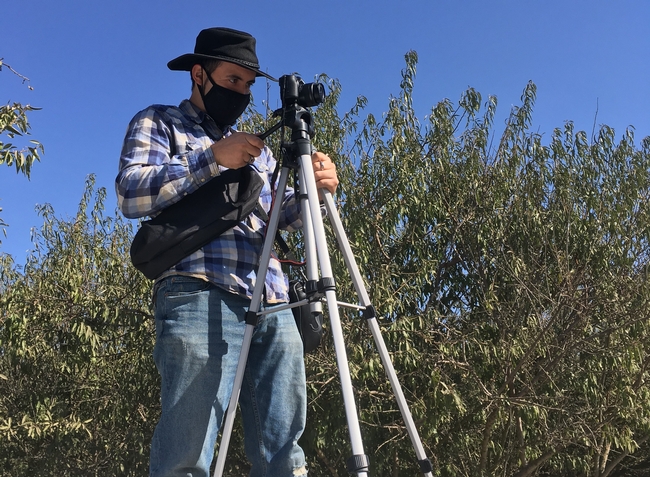
In particular, the organizers of the series recognized the importance of including technical and extension support to urban and semi-urban farmers in the East Bay and beyond.
“We wanted to make sure to include practical support from fellow farmers that was both accessible and relevant to our diverse small and urban farmers,” said Julio Contreras, UCCE community education specialist. “This meant covering topics like seeding with spreaders or by broadcasting – using small equipment and machinery or no-till systems – and even cover cropping in planter boxes.”
Aram and Bennaton also credited their Contra Costa Resource Conservation District partners: Ben Weise, agriculture conservation manager; Derek Emmons, agriculture conservation coordinator; and Chris Lim, executive director.
The project, funded by a Specialty Crops Block Grant from the California Department of Food and Agriculture, was also made possible by the generous contributions of time and expertise from presenters and hosts of farm-site visits, according to Aram.
“I hope that the videos will enjoy a long life online; they really contain a wealth of knowledge,” he said.
The series is available for view at http://ucanr.edu/CoverCropsCoCo.
UC partners with Gotham Greens to advance indoor agriculture
Gotham Greens, a pioneer in indoor agriculture operating high-tech greenhouses across the United States, is placing its latest state-of-the-art greenhouse near UC Davis.
“We are building a Controlled Environment Agriculture Consortium to support and advance the indoor farming industry, grow more fresh produce on less land and create new jobs for Californians,” said Gabriel Youtsey, UC ANR chief innovation officer. “Gotham Greens is an anchoring partner of this research and industry collaboration that we hope will spur innovation, create a new indoor farming workforce and support industry growth.”
University of California Agriculture and Natural Resources and the UC Davis College of Agricultural and Environmental Sciences have entered into a partnership with Gotham Greens to advance research and innovation in the areas of indoor agriculture, advanced greenhouse technology and urban agriculture. The new greenhouse facility enables opportunities for Gotham Greens and the University of California system to collaborate on research and innovation focused on advancing the science, workforce, technology and profitability of indoor agriculture globally.
“We are proud to bring Gotham Greens to the West Coast and partner with one of the highest ranked agricultural research centers in the world to advance the entire agriculture system,” said Viraj Puri, Gotham Greens co-founder and CEO. “California is responsible for growing one-third of the country's vegetables and two-thirds of the nation's fruits, yet in recent years, issues surrounding drought, food safety and worker welfare have demonstrated the need for continued innovation. Gotham Greens offers consumers clean, safe and sustainably grown leafy greens, herbs and versatile, time-saving plant-based dressings, dips and cooking sauces.”
Located in Solano County, the first phase of Gotham Greens' 10-acre greenhouse facility is expected to open in 2021 and will enable the company to deliver fresh, greenhouse-grown leafy greens to more retailers, foodservice operators and consumers on the West Coast. The company operates one of the largest and most advanced networks of hydroponic greenhouses in North America, where the demand for indoor-grown produce continues to surge. Nearly a decade after launching the nation's first commercial-scale rooftop greenhouse, Gotham Greens continues to reimagine how and where fresh produce is grown across America.
“We're excited about collaborating with Gotham Greens, which is a coveted employer for tomorrow's leaders in agriculture and engineering,” said Helene Dillard, UCD CAES dean. “This partnership will offer our students the chance to learn best practices from leading experts in indoor farming.”
The greenhouse will generate 60 full-time jobs and provide students in the University of California system with an opportunity to learn firsthand from the industry leader. Gotham Greens recently raised $87 million in new equity and debt capital, bringing the fast-growing company's total financing to $130 million and fueling its next phase of growth.
"We are delighted for Gotham Greens to join Solano County's thriving agricultural economy and help to usher in a new era in farming innovation, job creation and economic growth for the region,” said Solano County Supervisor John Vasquez.
Gotham Greens owns and operates greenhouses in New York, Illinois, Rhode Island, Maryland and Colorado. Its products are currently available in more than 40 U.S. states and 2,000 retail stores.
New food-safety guide outlines laws and best practices for urban farmers
Californians growing food in cities now have help understanding the food safety laws that apply to them. A free publication containing California-specific information on rules and regulations for urban farmers was recently published by the University of California Agriculture and Natural Resources.
Growing fresh fruits and vegetables in community gardens, backyards and rooftops helps provide more food for urban communities, creates jobs and teaches people about the value of healthy foods, according to Jennifer Sowerwine, lead author and UC Cooperative Extension specialist at UC Berkeley.
"There are a growing number of backyard and community producers who are scaling up to sell some of what they grow,” said Rachel Surls, UC Cooperative Extension sustainable food systems advisor based in Los Angeles County and co-author. “We hope this guide will help them navigate the regulations and learn best practices for keeping food safe for consumers."
“California Urban Agriculture Food Safety Guide” provides urban food producers with an overview of food safety laws and regulations that may impact their operations. To help minimize the risk of contamination of foods during their production and exchange, it also provides best practices, or Good Agricultural Practices (GAPs).
"People donating produce grown or gleaned from urban environments will learn what laws may apply to them, and practical steps they can follow to minimize the risk of foodborne illness from urban-produced foods,” Sowerwine said.
The 72-page guide covers fresh produce safety, urban soils safety, as well as food safety considerations for eggs, poultry and small livestock in the urban environment. The authors also point out which aspects of the Food Safety Modernization Act apply to urban farms, California laws that apply, record keeping requirements, information on working with gleaners, how to register as a community supported agriculture (CSA) organization, permitting requirements, and how to develop a food safety plan.
Urban farmers can do a food safety assessment of their own farms using a check list included in the publication.
The guide was produced by Sowerwine; Christina Oatfield, Sustainable Economies Law Center policy director; Rob Bennaton, UC Cooperative Extension urban agriculture advisor; Alda Pires, UC Cooperative Extension in the UC Davis School of Veterinary Medicine; Surls; Valerie Borel, UC Cooperative Extension program representative; and Andre Biscaro, UC Cooperative Extension agriculture and environmental issues advisor.
The publication “California Urban Agriculture Food Safety Guide: Laws and Standard Operating Procedures for Farming Safely in the City” is available for free download at https://anrcatalog.ucanr.edu/pdf/8660.pdf.
